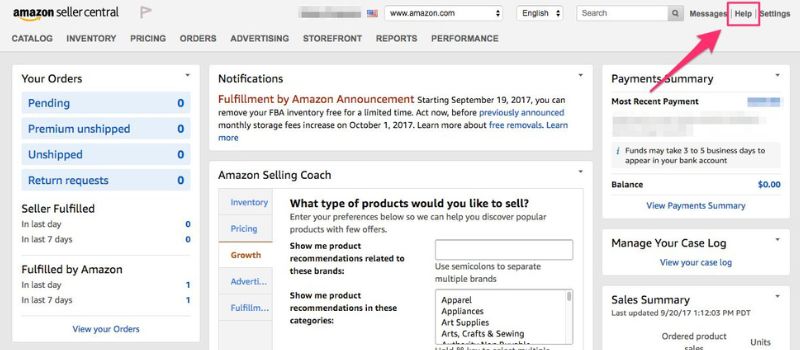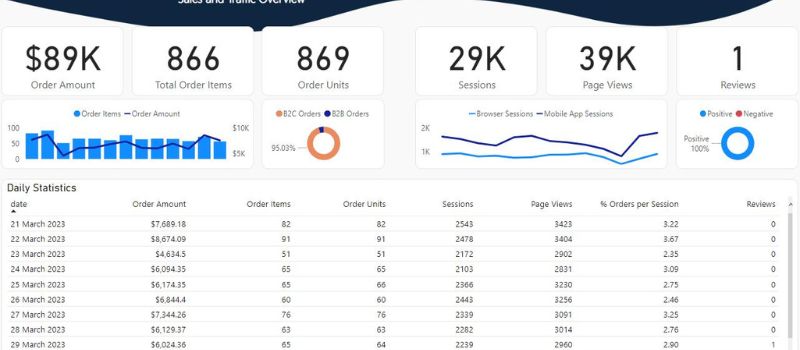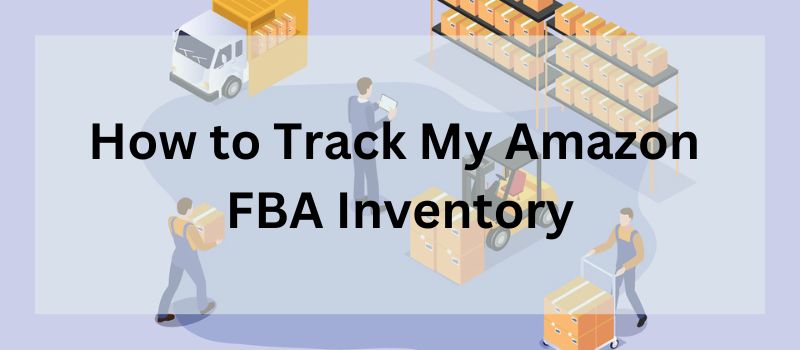If you’re an Amazon seller like me using the Fulfillment by Amazon (FBA) program, having visibility into your inventory levels is absolutely vital. Properly tracking FBA inventory helps amazon fba consultant avoid
- Stockouts And Overselling
- Identify Fast An
- Slow-moving Products,
- Maintain Optimal Inventory
- Make Smarter Purchasing Decisions
But with inventory stored across Amazon’s vast fulfillment center network, how do as an amazon fba consultant I keep tabs on my products?
In this post, as an amazon fba consultant I’ll walk you through the key methods and tools amazon expert use as an Amazon seller to accurately track FBA inventory. Whether you manage 100 or 10,000 SKUs, monitoring stock levels is crucial for FBA success.
Let’s explore some options!

Contents
- 1 How to Track My Amazon FBA Inventory
- 2 Why Tracking FBA Inventory is So Important
- 3 Inventory Tracking Options for FBA Sellers
- 4 Best Practices for Tracking FBA Inventory
- 5 FAQs:
- 5.1 Q1: How do I check my FBA inventory?
- 5.2 Q2: What is stranded inventory in Amazon FBA?
- 5.3 Q3: Why is my Amazon inventory count inaccurate?
- 5.4 Q4: What is a good FBA inventory turnover ratio?
- 5.5 Q5: How often should FBA sellers reconcile inventory?
- 5.6 Q6: What is the best FBA inventory management tool?
- 6 Conclusion:
How to Track My Amazon FBA Inventory
Amazon sellers can check current inventory quantities in Seller Central. For enhanced tracking, use inventory management software to monitor stock levels across fulfillment centers automatically.
Regularly scan products with a barcode scanner to perform cycle counts and improve accuracy.
Why Tracking FBA Inventory is So Important
Amazon fba consultant can’t stress enough how vital inventory tracking is, especially for us FBA sellers. When our products get sent off to Amazon’s warehouses, we lose that hands-on control and visibility.
Without proper monitoring in place, here are some problems mujahid rafiq has experienced:
- Overselling Products: Nothing damages a brand more than having angry customers because I ran out of stock unexpectedly. And losing that sale hurts too! Getting inventory tracking right helps prevent this.
- Excess and Dead Stock: On the other hand, having slow-moving inventory tying up my capital and clogging up warehouses doesn’t help either. I need inventory reports to know what’s selling and what isn’t.
- Suboptimal Inventory Levels: Am I keeping too much safety stock causing excess carrying costs? Or do I risk stockouts because I’m carrying too little? Proper tracking helps me hit the inventory sweet spot.
- Difficulty Planning and Forecasting: How can I confidently plan future inventory needs and purchase quantities without understanding existing inventory performance? amazon fba consultant can’t, not without reliable data at least.
So, sloppy inventory tracking as an FBA seller leads to being either perpetually out of stock or having excess inventory and capital trapped. Both scenarios essentially sink profitability. That’s why getting this right is non-negotiable as an Amazon seller using FBA.

Inventory Tracking Options for FBA Sellers
Now that I’ve convinced you (and myself!) of why FBA inventory tracking matters, what are some practical options at my disposal as an Amazon seller? Broadly, I group them into three buckets:
Using Amazon Seller Central
As an FBA seller, thefirst place I can view inventory data is within Amazon Seller Central. This is Amazon’s portal that lets me manage my seller account. Under the Inventory tab, I can check on-hand quantities for all my products across Amazon’s fulfillment network. Useful information here includes:
- Total Units: How many units of a particular ASIN are on hand right now.
- Available Units: How many units are available to be sold or are already reserved for existing orders.
- Inaccessible Units: Number of units that are damaged, expired, missing etc.
In addition to current snapshot quantities, Seller Central also lets me pull inventory reports on a SKU or ASIN level. Examples include the FBA Inventory Aging Report showing amazon fba consultant slow-moving stock, or the FBA Inventory Health Report flagging stranded and unsellable inventory.
Another neat feature is the ability to set Inventory Alerts. This lets me get notified via email whenever the available quantity of a product dips below my predefined threshold. Handy for monitoring fast-selling items!
So in summary:
- Pros: Direct access to Amazon’s inventory data, ability to pull reports, set alerts.
- Cons: Information limited to what Amazon shows me, no custom metrics or reporting.
Seller Central gives me the basic inventory visibility that I need. But alone, it’s probably insufficient, especially as Amazon FBA consultants scale my FBA business across thousands of SKUs. Let’s look at some other options.

Using Third-Party Tools
In addition to Amazon’s native options, amazon fba consultant also leverage third-party tools for enhanced FBA inventory management. Broadly, these fall under two buckets:
Inventory Management Software
These are full-fledged software solutions that provide complete FBA inventory visibility and reporting. Key features include:
- Dashboard showing overall inventory health
- Granular tracking of units by fulfillment center
- Automated reports and analysis
- Reorder point management
- Integrations with Amazon APIs for real-time data
Some popular examples as an amazon fba consultant I’ve used with decent success are Sellbrite, Skubana and InventoryLab. They come with varying price points and capabilities, so I’d advise assessing them against your needs.
The main appeal of these tools is their ability to automatically monitor all my SKUs in one place. Amazon FBA experts can set stock alerts, track the shelf life of aged inventory, identify fast and slow sellers, and more. For sellers managing thousands of SKUs like myself, these tools are invaluable!

Barcode Scanners and Mobile Apps
In addition to automatic monitoring through software, Amazon fba expert also leverage barcode scanners for precision inventory counts. These little gadgets let me accurately scan products for on-hand quantities. Scanners help me:
- Verify inventory levels across products
- Identify discrepancies or errors
- Perform regular cycle counts for accuracy
Amazon fba expert use a Bluetooth scanner that seamlessly pairs with inventory apps like ScoutIQ. This lets me scan products and instantly sync the counts with my Amazon listings.
The scanning process is more manual but useful for tackling inventory issues at a granular level. Amazon fba expert don’t rely solely on these for large FBA catalogues, but they definitely complement my overall tracking.
Manual Tracking with Spreadsheets
When I first started out, everything was manual – including inventory tracking! I’d carefully compile inventory reports from Seller Central and note down quantities in spreadsheets.
It worked fine when I had just a handful of products. But as my inventory grew, this manual method couldn’t keep up. Key downsides included:
- Time-consuming and tedious
- Higher likelihood of human error
- Difficulty scaling across thousands of SKUs
- Delayed visibility into stock changes
So while spreadsheets are better than no tracking at all, I’d only recommend them for beginners with very few SKUs to manage. Everyone else should look into automation.
And speaking of automation…

Best Practices for Tracking FBA Inventory
When it comes to managing FBA inventory, I’ve learned a few key lessons:
Set Realistic Reorder Points
Blindly using Amazon’s recommended reorder quantities often leaves me either understocked or overburdened with excess inventory. That’s why Amazon fba expert take time to analyze historical sales velocity across SKUs to configure suitable reorder points. This helps smooth out stock levels.
Perform Regular Cycle Counts
It’s good practice as an FBA seller to periodically scan products and verify on-hand quantities. This helps me catch and resolve inventory gaps or errors early. I try to cycle count my fastest selling SKUs at least once a month.
Track Key Inventory KPIs
Just having raw inventory numbers isn’t enough. Amazon fba consultant also track key metrics like days-of-supply, velocity, stranded inventory percentage and more across products. Monitoring the trends and outliers helps me make smart FBA decisions.
Automate Where Possible
Updating spreadsheets was unsustainable. That’s why Amazon fba expert invested in inventory management software to monitor stock levels automatically. The ability to get reports, alerts and insights without pointless manual work is invaluable.
Investigate and Address Discrepancies
Despite best efforts, inventory gaps still popup occasionally. When that happens, I dig deeper to understand causes – was it theft, damage or errors? Regardless, I course-correct ASAP whether that means reconciling the books or reordering products.
Getting these fundamentals right goes a long way in helping me track FBA inventory effectively. Amazon makes warehouse transparency difficult, so having robust processes gives me the visibility I need.
FAQs:
Q1: How do I check my FBA inventory?
You can check your live inventory levels in Seller Central under the Inventory tab. This shows total units, available & reserved units, and inaccessible units.
Q2: What is stranded inventory in Amazon FBA?
Stranded inventory refers to products stuck at an Amazon fulfillment center that are unsellable due to issues like damage, expiration or missing information. This ties up working capital.
Q3: Why is my Amazon inventory count inaccurate?
Discrepancies can happen due to damages, warehouse transfer errors and delays in inventory updates in Seller Central. Perform regular cycle counts and address gaps.
Q4: What is a good FBA inventory turnover ratio?
An inventory turnover between 6-12 times per year is generally considered healthy. Higher turnover indicates efficient working capital deployment and inventory management.
Q5: How often should FBA sellers reconcile inventory?
Reconciling inventory quantities with your accounting records should be done at least monthly. Faster reconciliation allows you to address discrepancies quicker.
Q6: What is the best FBA inventory management tool?
Top solutions include Sellbrite, Skubana and InventoryLab. Evaluate capabilities like central dashboard, rules-based reorder points, analytics and integrations as per your needs.
Conclusion:
As an Amazon seller using FBA, getting inventory management right is imperative for me both operationally and financially. Tracked effectively, it prevents nightmares like stockouts, write-offs, and inventory bloat plaguing my bottom line.
With programs like Fulfilled by Amazon handling fulfillment and logistics, Amazon fba expert owe it to himself have visibility into stock levels. While Amazon Seller Central provides basic product information, Amazon fba expert prefer leveraging dedicated solutions like inventory management software, barcode scanners and apps for enhanced tracking.
The ability to monitor inventory health across thousands of product SKUs, set intelligent reorder points, and identify issues before they spiral helps my FBA business tremendously. Amazon fba expert hope you as a fellow seller also recognize the critical importance of inventory visibility.
Use this post as a blueprint to start tracking your products better using some of the tools and best practices Amazon fba expert shared. Proper inventory hygiene is difficult with FBA, but extremely important – do not overlook this!
Now I’d love to hear your thoughts and experiences around managing FBA inventory. What methods or tools have worked for you? Or what challenges are you facing? Let me know in the comments section below!
Click below to schedule a free consultation!
Read more:



